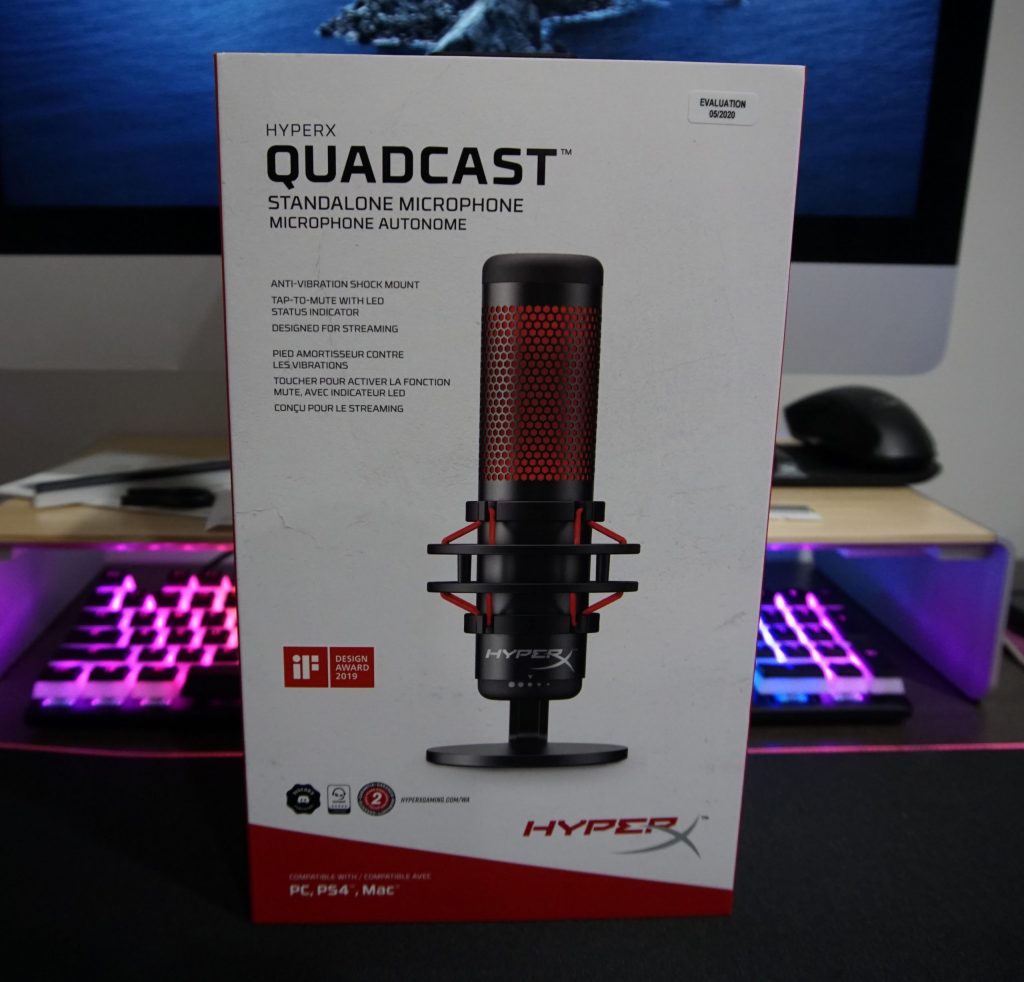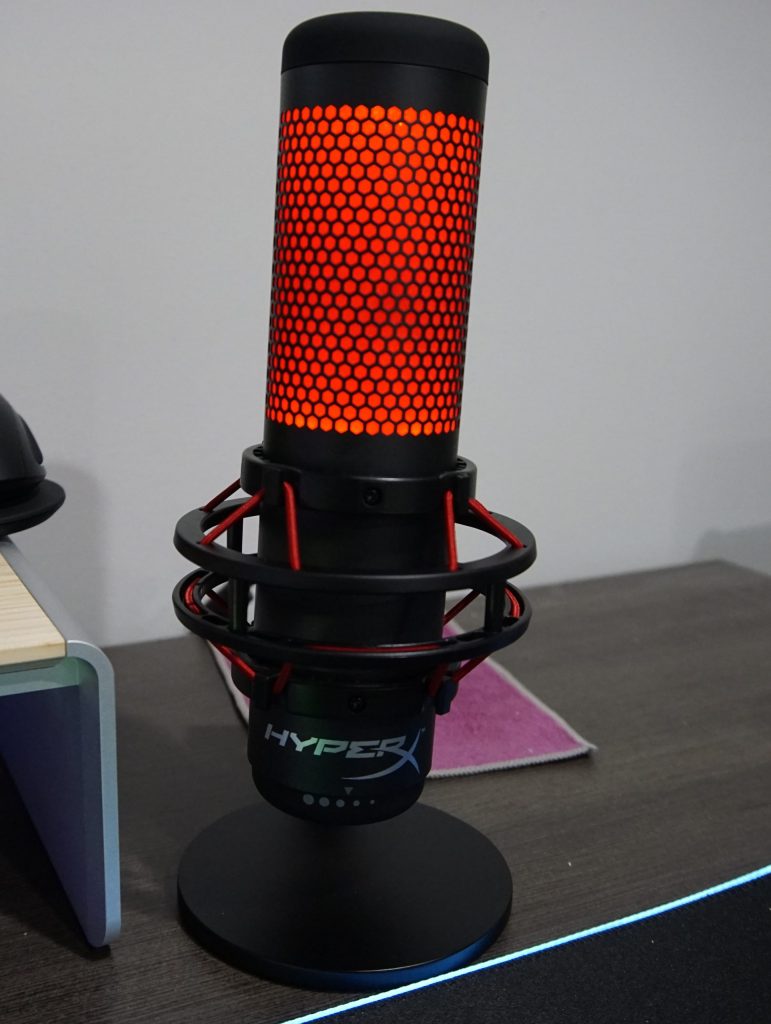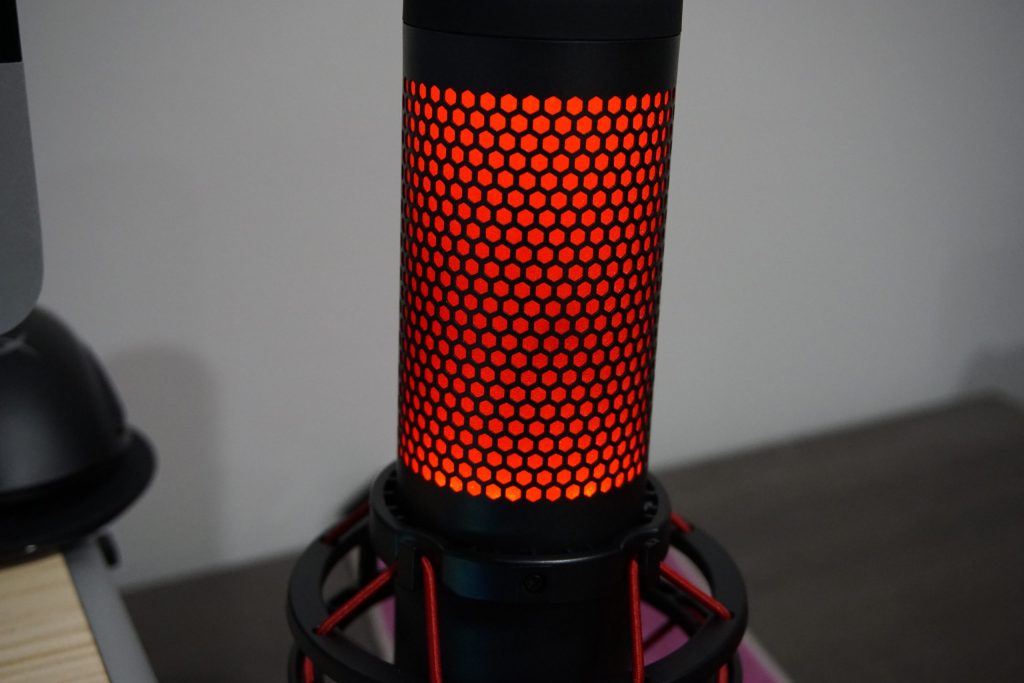One of the many unexpected outcomes of COVID-19 is an increase of people interested in streaming. Since people have more time and, in the case of myself, free unlimited internet, it’s the perfect time to show people your skills, start a community or simply try your hand at goofy commentary. While beginners might want to start with some kind of gaming headset, many are attempting to build a bigger set up and one of the most important things is a quality microphone. Despite the go to suggestion being Blue’s ever popular Yeti or Snowball products, HyperX created the QuadCast with gamers and streamers in mind and tries to offer players a nice alternative. After using it a bit, does the QuadCast perform well or are players better off sticking with more conventional options?
Right off the bat, HyperX QuadCast is probably the biggest box we’ve seen from HyperX. However, outside of size, it’s fairly familiar for the company. The red and white design matches their various other products and includes all the key information you could possibly want. Gamers will likely appreciate basic information printed directly on the packaging. These include showing it supports Discord, Skype, Xsplit, TeamSpeak and Mumble chat programs, along with popular streaming platform Open Broadcast Software or OBS. In addition to highlighting programs, it mentions PC, PS4 and Mac support. Unfortunately, Xbox is not supported natively but it will work via Mac or PC with a capture card, even if said program is not listed (in my case Game Capture HD).

As mentioned above, this is a rather large box and most of it is to properly protect the microphone. After opening the box and removing a fairly substantial piece of Styrofoam, you’ll find the microphone, already attached to the stand, with the adapter and cable to the side. For those wondering, the cable is actually a good length, roughly 10’ long, giving you a wide variety of set up options.
Despite looking rather lightweight, there is a fair amount of heft to this microphone. Most of this is the base, which makes it rather difficult to move or tip over. The rubber base holds the microphone firmly in place and adds a little bit of articulation. As for the actual microphone, it feels well-constructed and has the nice cool feel of metal on the actual device, with the shock mount being plastic and the top and bottom featuring a rubber texture. The anti-vibration shock mount also does a good job of preventing movement. Even forcibly hitting the microphone will result in a quick shake, followed almost instantly by it stabilizing. Inside, you can also see the pop filter, it kind of looks like a foam when it is illuminated, but makes for a sleeker look than an external one.

Getting HyperX QuadCast ready for use was surprisingly simple. There are only two inputs on the back, one being a USB-mini for connecting it to your device and the other being a headphone jack. The instant I connected it to my computer Discord gave me the option of using it and it instantly appeared as an input device in Game Capture HD.
That said, finding the right settings for QuadCast might take some time. Despite initial concerns, it does a good job of filtering out pointless background noises. Even with it roughly 2’ away from my mechanical keyboard, it didn’t register a sound unless I actively tried to make noise. My Dyson air multiplier and even soundbar to the side didn’t register, meaning I didn’t actually have to change my set up if I didn’t want to. Quieter, people with a more involved set up or just want to speak softer might need to spend more time editing settings but this shouldn’t take more than a couple minutes. It also supports four polar patterns, so the same microphone can be used for capturing music, a two person interview, whole room podcast or conference call or simply the person in front.

Performance was surprisingly good. Normally when I hear my voice I wonder how anyone talks to me, a reaction I hear is surprisingly common, where QuadCast makes it far more clear. Normally there is a bit of distortion, echo or makes things flat. Some of my nicer headsets do a much better job than entry level ones but nothing makes things as crisp as the QuadCast. Even without spending a lot of time changing my set up or finding the right settings, I felt like I went from a doing this for fun, to something closer to professional. I imagine with better placement, more time messing with the settings and some feedback, it could be used to create a really impressive experience. Enough to, maybe not match a professional set up but more than your average streamer or YouTube channel could possibly need.
That being said, there are some downsides. Since the polar pattern dial is on the back, along with the headset input, it makes things harder to edit on the fly and can sometimes result in the headset being in the way. There are ways around it, like I use an external amp for my headphones but it isn’t the most ideal set up. Some might not care for the microphone being illuminated while active, something you can’t edit, which can be distracting during normal play sessions or just basic use.
HyperX QuadCast Microphone Verdict
If you’re looking for microphone to enhance your audio quality, you’d be hard-pressed to find something better than the QuadCast. Not only is it simple to use, it had enough features to make it versatile, in addition to looking pretty cool. Some people might not like the glow and the buttons could be in a better location but odds are you won’t need them enough for it to be a dealbreaker. You just need to be willing to set it up right but once you get it going, you’ll be wondering why you were using a headset before.
[Editor’s Note: HyperX QuadCast was provided to us for review purposes.]

